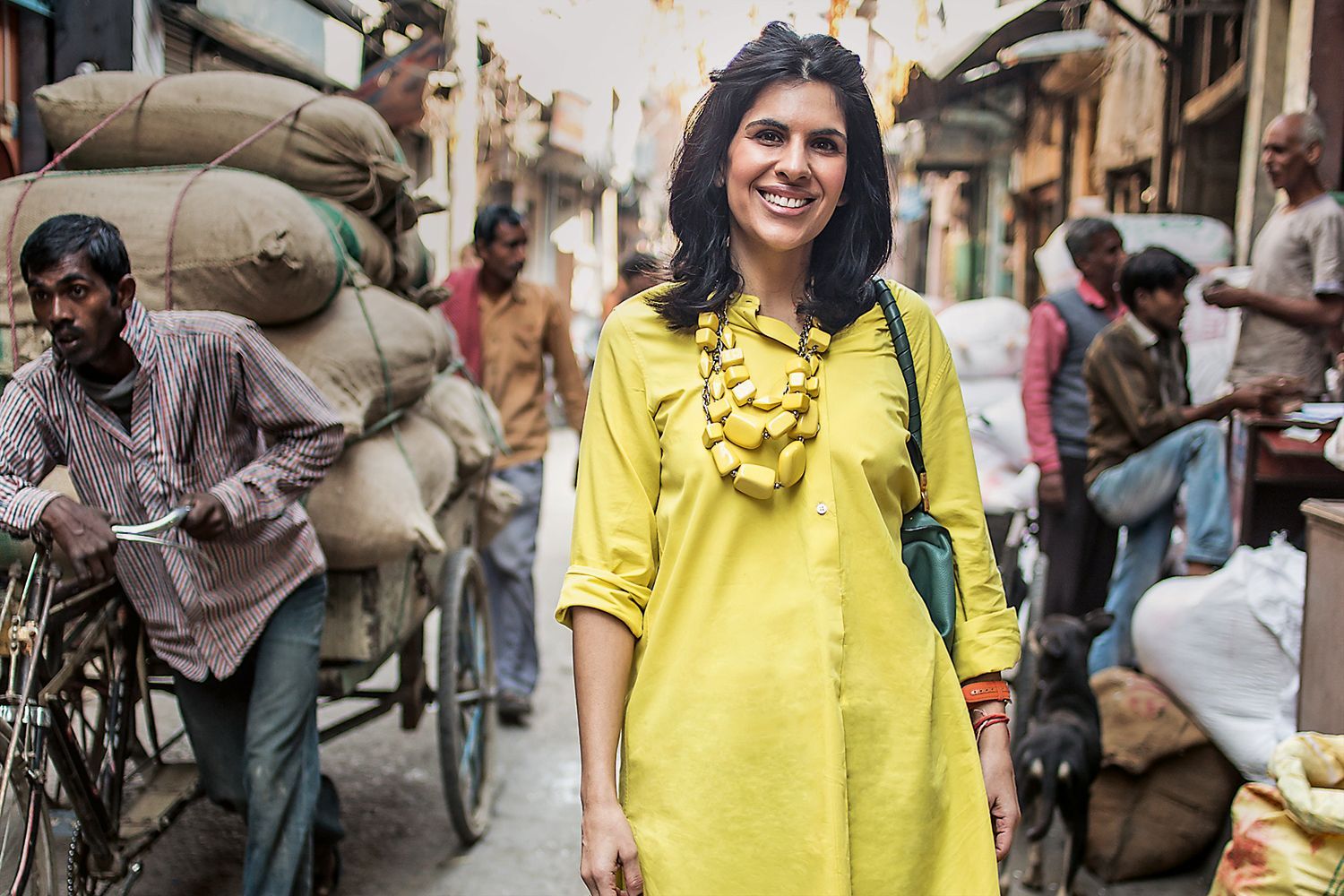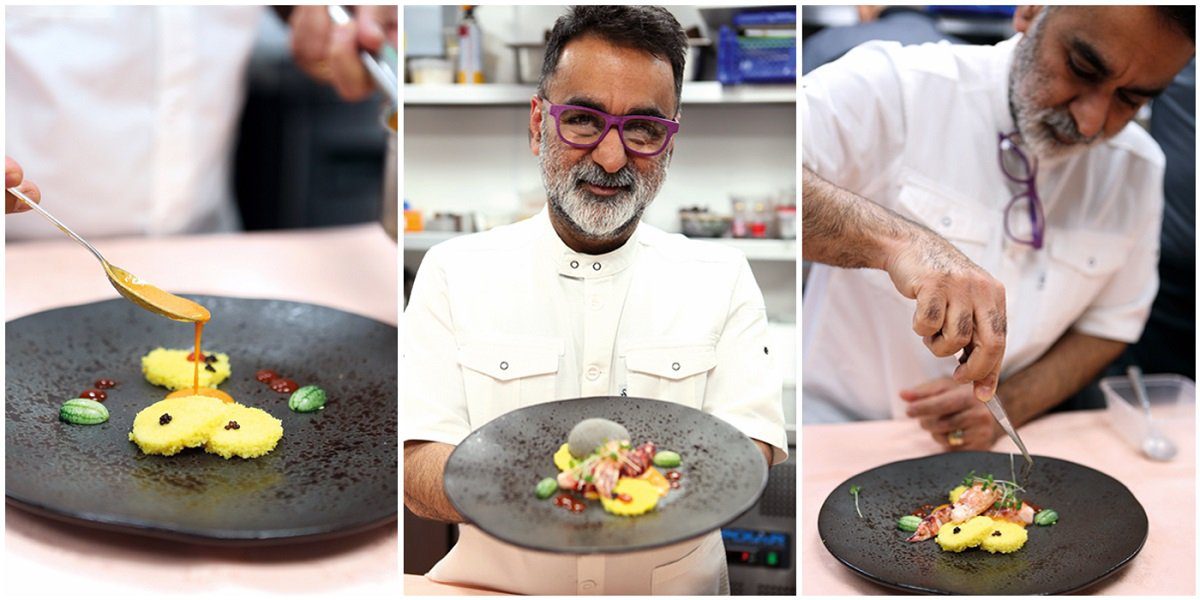(November 10, 2021) Anjum Anand’s love affair with food and flavours began rather early on. Her father taught her to enjoy food and her mother taught her to cook. When the family lived in Switzerland, they would often cross over to France to sample trout cooked a certain way because her father would have heard of it. Their adventures often culminated in amazing eating experiences.
Yet, despite this obvious love for food, a culinary career was not Anjum’s first choice. Regardless, the pull towards all things gastronomical was inevitable and today, this Global Indian is the author of over seven cookbooks, and has several successful TV shows to her credit, including a couple for the BBC. Called the Indian Nigella Lawson, she also helms a successful business called The Spice Tailor which offers a range of curry sauces, naans, and chutneys. Rather popular, her brand has also received the several awards; the most recent one being the Canadian Grand Prix Award earlier this year for their dal.
Thank you for taking me there. I loved it. X https://t.co/z719cK2mdf
— Anjum Anand (@Anjum_Anand) April 21, 2019
Indian connect
Anjum’s father Prem was born in the Pakistan side of British India 12 years before Partition. He was one of 14 siblings and his family fled to Delhi in 1947 where they began from scratch. He moved to London where he worked with a pharmaceutical company when he 20 and worked hard to build a new life for himself in a new country. It was here that Anjum was born and raised, though Anjum did also live and study in Geneva, Paris, and Madrid. When the family lived in Switzerland, they would often drive over to France on the weekends to try new food. She graduated from the European Business School London with a degree in European Business Administration before launching and running a business importing flat-pack furniture from Eastern Europe.
However, the job didn’t satisfy Anjum, who’d always had a passion for all things food. In an interview with Deccan Herald she said, “I would go to the office every day, but when I came home, I found myself depleted. I started cooking in the evenings and I soon realised that I really loved those moments in the kitchen. Soon, I started calling my friends home on weekends for meals, and they enjoyed the food so much that they asked me to open a restaurant.”

New beginnings
This sparked the beginning of a new journey and Anjum began working in cafes and restaurants to get exposure to working in kitchens to educate herself about the food industry. As she began learning more and more about all things food, she also realised that what she truly wanted to do was educate people on the healthy Indian food alternatives. A large part of this stemmed from her own struggles with weight as a teenager.
Anjum also believes that Indian food often gets the rap for being unhealthy. However, in reality offers a plethora of flavours while being healthy too. This she says, can be easily done by reducing oil and increasing spices like ginger, curry leaves and mustard. In an interview with Stephanie Dickison, she said that people assume Indian food is unhealthy. “It isn’t but needs to be understood and also put in context. What you eat at the average Indian restaurant isn’t how we eat at home. We never add nut pastes or cream to our curries; our curries are often thinner, tangier and fresher than you might think. Also, a typical Indian plate would feature a vegetable dish, a protein and a carbohydrate. It is rare to have much more than a crunchy salad and or a raita with it. Indian food is replete with healthy ingredients, spices, garlic, ginger, onions, tomatoes, vegetables and lentils and only a little meat or fish. It is, in fact, a really good way to eat.”

The learning curve
With this in mind, she went on to become a food columnist, consultant chef and also brought out her first book Indian Every Day: Light Healthy Indian Food. She also starred in the BBC series Indian Food Made Easy and was a regular guest on UKTV’s Great Food Live. Her family-friendly and healthy spin on traditional food shot her to popularity and her latest book I Love India is a guide to create authentic and vibrant Indian dishes at home.
Anjum has been constantly inspired by the variety and originality of Indian flavours and cuisines. A frequent visitor to the subcontinent, she spends substantial time at her family homes in Delhi and Kolkata. For those who mistake curry to be the essence of Indian food, she says that the diversity can be rather surprising. From street food to kebabs, fresh chutneys to a host of local flavours that each region offers, there is a lot to discover and learn about food from the subcontinent, according to this writer.

In 2011 she launched The Spice Tailor which is now sold across supermarkets in the UK, Australia, and Canada. The brand offers a range of sauces and dals that use fresh ingredients, are slow cooked, and are devoid of preservatives or additives.
A big champion of choosing food that nourishes the body, Anjum believes in Ayurveda and her book Eat Right For Your Body Type also draws from its principles. Her tryst with the ancient Indian science began when she consulted an Ayurvedic doctor for her indigestion and lack of energy. “The doctor figured me out in five minutes and put me on a course of herbal medicine and helped me to understand how the body works,” she said.
Giving Back
She routinely does her bit to give back to society and one of the causes she lends her support to is Fight for Sight, UK’s main eye research charity. She encourages the public to sign up to the charity’s fundraising initiative Feast your Eyes, which nudges people to challenge their senses through a blindfolded breakfast, lights-out lunch, pitch black picnic, challenging cheese and wine or dinner in the dark.




